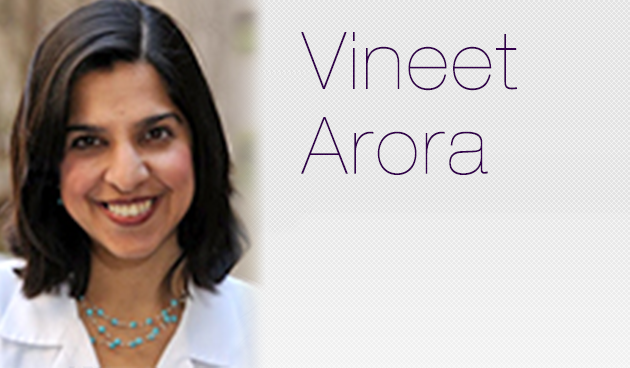The other week, when looking at PBS NewsHour, amid the discussion of the amazing bravery of a few heroes thwarting a train attack in France and concerns of the volatility of the stock market, one headline read: “Why won’t hospitals let their patients sleep?” This was one of many news outlets that picked up this story and it just spread on Twitter with many doctors and patients alike tweeting about it.
As someone who studies this area, I was actually surprised it was getting so much attention. I was asked to do an interview for a Salt Lake City radio station on our work defining the problem, and it was then that I realized why it was of such interest. As the banter continued between the hosts, it became apparent that the prevailing notion is that everyone who has ever been in a hospital knows that it’s the last place you can’t get any sleep…and some had just assumed that is how it is. As one news anchor put it, “it’s called ‘vitals’ for a reason…so now you are going to the hospital and asking for less care?”
While certainly some disruptions at night are medically necessary ranging from vitals, exams, and tests, there are a host of disruptions that are occurring simply because it is the default pathway. In our recent work, we have come to realize that the electronic health record (EHR) is indeed a powerful tool – it automates processes – both good and bad. Just as it can improve a hand-off with a structured tool, the EHR can wreak havoc with automating a bad process.
With the introduction of EHR, many sleep disruptions are now hard wired into the system. For example, all patients admitted to our general medicine service have vitals taken every 4 hours. There was an “option” to consider forgoing the 2 AM vitals, but it is auto-checked and not even shown to the doctors under the assumption that all vitals are every 4 hours. When I had a medical student look into why vitals are every 4 hours, as opposed to some other number, it turned out there is no evidence base for it. It is just the way it’s always been done, dating back to the era of Florence Nightingale in 1893! Not surprisingly, in our research our data showed that vitals are done every 4th hour regardless of how sick or healthy you are.
Let’s take the case of labs. Everyone is always trying to get morning labs. Because no one has faith that the morning labs are actually available in the morning at 6 AM, the lab sweep was changed to 4 AM. When electronic health records came, the default on the admitting order set for all future labs is now 4 AM because that’s what was happening. For an individual physician to change the time of labs even if a patient requested it would require individually reordering all the labs at a different time.
This just highlights a few of the defaults that lead to greater nighttime disturbances for patients. So what can we do?
Well, our team was fortunate to receive an NHLBI grant to educate novel populations about sleep – and we chose hospitalists, residents, and nurses, for two reasons. First, it is well known that the poor sleep environment in the acute care setting can contribute to worse outcomes, such as delirium or “post-hospital syndrome.” Second, and less well known, is that hospitalization is an epidemic of untreated sleep apnea with 2 out of every 5 patients who leaves the hospital is high risk for sleep apnea. Moreover, treating sleep apnea in some conditions has been shown to reduce readmission. In sum, hospitalization is a missed opportunity to help identify those patients at risk for sleep apnea and correct it, which may help overall care issues related to cardiopulmonary disease.
 So how do we deliver education to this population of providers? Well in lieu of a lecture, we decided that we needed something different- something entertaining and fun. As Scot Litin from Mayo likes to say, “Make it edu-taining.” So, we decided to host a “launch party” complete with a swag bag and cake to launch our program SIESTA: Sleep for Inpatients: Empowering Staff to Act. In addition to asking the staff to help improve sleep, we also made it easier for them to “act”- by changing the defaults in the electronic health record to “nudge” clinicians to do the right thing. With the help of several students, including Monica Shah, an SHM Student Hospitalist Scholar, we will be formally evaluating our program on educational and patient care outcomes. For now, we have immediate feedback from the staff that they agree it’s an important issue and they would all like to contribute to making changes to improve sleep in the hospital.
So how do we deliver education to this population of providers? Well in lieu of a lecture, we decided that we needed something different- something entertaining and fun. As Scot Litin from Mayo likes to say, “Make it edu-taining.” So, we decided to host a “launch party” complete with a swag bag and cake to launch our program SIESTA: Sleep for Inpatients: Empowering Staff to Act. In addition to asking the staff to help improve sleep, we also made it easier for them to “act”- by changing the defaults in the electronic health record to “nudge” clinicians to do the right thing. With the help of several students, including Monica Shah, an SHM Student Hospitalist Scholar, we will be formally evaluating our program on educational and patient care outcomes. For now, we have immediate feedback from the staff that they agree it’s an important issue and they would all like to contribute to making changes to improve sleep in the hospital.
As one recent editorial put it, we can no longer ignore the “elephant in the room” and must talk about hospital sleep medicine.



Leave A Comment